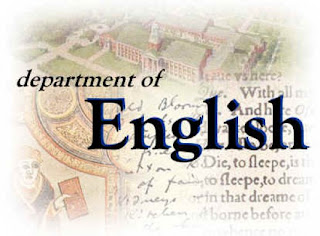1. Declarative Sentences
These sentences make a statement or express an idea.
- Structure: Subject + Verb (+ Object/Complement/Modifiers)
- Examples:
- She writes a letter.
- They are going to the park.
- The book is on the table.
- Examples:
2. Interrogative Sentences
These sentences ask a question.
a. Yes/No Questions
- Structure: Auxiliary Verb + Subject + Main Verb (+ Object/Complement/Modifiers)?
- Examples:
- Is she coming?
- Do you like pizza?
- Will they attend the meeting?
- Examples:
b. WH-Questions
- Structure: WH-word + Auxiliary Verb + Subject + Main Verb (+ Object/Complement/Modifiers)?
- Examples:
- What are you doing?
- Where is the library?
- Why did she leave early?
- Examples:
c. Tag Questions
- Structure: Declarative Sentence + Tag?
- Examples:
- You’re coming, aren’t you?
- He doesn’t eat meat, does he?
- Examples:
3. Imperative Sentences
These sentences give commands, requests, or advice.
- Structure: Verb (+ Object/Complement/Modifiers)
- Examples:
- Close the door.
- Please help me with this.
- Don’t talk during the lecture.
- Examples:
4. Exclamatory Sentences
These sentences express strong emotion or excitement.
- Structure: What/How + Subject + Verb (+ Object/Complement/Modifiers)!
- Examples:
- What a beautiful day it is!
- How amazing this place is!
- Examples:
5. Conditional Sentences
These sentences describe hypothetical or real conditions.
a. Zero Conditional (Facts or Universal Truths)
- Structure: If + Present Simple, Present Simple
- Example: If you heat water, it boils.
b. First Conditional (Possible Future Condition)
- Structure: If + Present Simple, Future Simple
- Example: If it rains, we will stay indoors.
c. Second Conditional (Unreal Present/Future Condition)
- Structure: If + Past Simple, Would + Base Verb
- Example: If I were rich, I would travel the world.
d. Third Conditional (Unreal Past Condition)
- Structure: If + Past Perfect, Would Have + Past Participle
- Example: If I had studied, I would have passed the exam.
e. Mixed Conditional (Combining Past and Present/Future)
- Structure: If + Past Perfect, Would + Base Verb
- Example: If I had taken the job, I would be happier now.
6. Simple Sentences
Contain one independent clause.
- Structure: Subject + Verb (+ Object/Complement/Modifiers)
- Example: The cat sleeps.
7. Compound Sentences
Contain two or more independent clauses joined by a coordinating conjunction.
- Structure: Independent Clause + Coordinating Conjunction + Independent Clause
- Examples:
- I went to the store, and I bought some bread.
- She is tired, but she will finish her work.
- Examples:
8. Complex Sentences
Contain one independent clause and one or more dependent clauses.
- Structure: Independent Clause + Subordinating Conjunction + Dependent Clause
- Examples:
- I stayed home because it was raining.
- Although he was tired, he kept working.
- Examples:
9. Compound-Complex Sentences
Contain two or more independent clauses and one or more dependent clauses.
- Structure: (Independent Clause + Coordinating Conjunction + Independent Clause) + Dependent Clause
- Examples:
- She went to the store, and she bought vegetables because she wanted to cook dinner.
- Although it was late, he went for a walk, and he enjoyed the fresh air.
- Examples:
10. Passive Sentences
These sentences emphasize the object rather than the subject.
- Structure: Object + Auxiliary Verb + Past Participle (+ by Subject)
- Examples:
- The cake was baked by Mary.
- The letter is being written.
- Examples:
11. Inverted Sentences
In these sentences, the verb precedes the subject (often for emphasis or questions).
- Structure: Verb + Subject (+ Object/Complement/Modifiers)
- Examples:
- Never have I seen such beauty.
- Here comes the train.
- Examples:
12. Cleft Sentences
Used to emphasize a part of the sentence.
a. It-Cleft
- Structure: It + Be + Emphasized Part + Relative Clause
- Example: It was John who broke the vase.
b. What-Cleft
- Structure: What + Clause + Be + Emphasized Part
- Example: What I need is a cup of coffee.
there are four main types of sentence structures, each categorized by the number and type of clauses they contain.
1. Simple Sentence
A simple sentence contains one independent clause and expresses a complete thought. It has a subject and a predicate.
- Structure: Subject + Verb (+ Object/Complement/Modifiers)
- Characteristics:
- No dependent clauses
- Can include compound subjects or predicates
- Examples:
- The dog barked.
- She sings beautifully.
- Tom and Jerry went to the park and played.
2. Compound Sentence
A compound sentence contains two or more independent clauses joined by a coordinating conjunction, a semicolon, or a conjunctive adverb.
- Structure: Independent Clause + Coordinating Conjunction + Independent Clause
- Coordinating Conjunctions: FANBOYS (For, And, Nor, But, Or, Yet, So)
- Characteristics:
- No dependent clauses
- Each clause can stand alone as a separate sentence
- Examples:
- I wanted to go for a walk, but it started raining.
- She studied for her exam; she passed with flying colors.
- You can watch a movie, or you can read a book.
3. Complex Sentence
A complex sentence contains one independent clause and at least one dependent (subordinate) clause. The dependent clause cannot stand alone and relies on the independent clause to form a complete thought.
- Structure:
- Subordinate Clause + Independent Clause
- OR
- Independent Clause + Subordinate Clause
- Subordinating Conjunctions: Because, Although, When, If, While, Since, etc.
- Characteristics:
- The subordinate clause may act as a noun, adjective, or adverb.
- Examples:
- Because it was raining, we stayed indoors.
- I will call you when I get home.
- She smiled although she was tired.
4. Compound-Complex Sentence
A compound-complex sentence contains two or more independent clauses and at least one dependent clause.
- Structure:
(Independent Clause + Coordinating Conjunction + Independent Clause) + Dependent Clause
OR
(Independent Clause + Dependent Clause) + Coordinating Conjunction + Independent Clause - Characteristics:
- Combines elements of compound and complex sentences
- Requires careful punctuation
- Examples:
- Although she was tired, she finished her homework, and she went to bed early.
- We went to the park, but it started raining before we could have a picnic.
- He didn’t study for the test because he was sick, yet he still managed to pass.
Key Components of Sentence Structure
- Independent Clause: A group of words that has a subject and predicate and expresses a complete thought.
- Example: She is reading a book.
- Dependent Clause: A group of words that has a subject and predicate but does not express a complete thought.
- Example: Because it is raining.
- Subject: The person, place, thing, or idea performing the action or being described.
- Example: John runs every day.
- Predicate: The part of the sentence that tells what the subject does or what happens to it.
- Example: John runs every day.
1. Subject
The subject of a sentence is the person, thing, or idea performing the action or being described. It answers the question, “Who or what is the sentence about?”
- Types of Subjects:
- Simple Subject: The main word (noun or pronoun) that acts as the subject.
- Example: The cat is sleeping.
- Complete Subject: The simple subject along with its modifiers.
- Example: The small, fluffy cat is sleeping.
- Compound Subject: Two or more subjects joined by a conjunction.
- Example: Tom and Jerry are playing.
- Simple Subject: The main word (noun or pronoun) that acts as the subject.
2. Main Verb
The main verb expresses the action, occurrence, or state of being in the sentence. It is the core of the predicate.
- Types of Verbs:
- Action Verb: Shows physical or mental action.
- Example: She runs fast.
- Linking Verb: Connects the subject to a subject complement (a word that describes or renames the subject).
- Example: He is a doctor.
- Auxiliary (Helping) Verb: Used with the main verb to show tense, mood, or voice.
- Example: She is running a marathon.
- Action Verb: Shows physical or mental action.
3. Object
An object is a noun or pronoun that receives the action of the verb or is affected by it. There are two main types:
a. Direct Object
- Receives the action of the verb directly. It answers “What?” or “Whom?” after the verb.
- Example: She wrote a letter.
- (What did she write? A letter.)
b. Indirect Object
- Tells to whom, for whom, to what, or for what the action is done. It comes before the direct object.
- Example: She gave him a gift.
- (To whom did she give the gift? Him.)
4. Complement
A complement is a word or group of words that completes the meaning of a verb. Unlike objects, complements are not directly affected by the action of the verb.
a. Subject Complement
- Follows a linking verb and renames or describes the subject.
- Predicate Nominative: Renames the subject.
- Example: She is a teacher.
- Predicate Adjective: Describes the subject.
- Example: The sky looks blue.
- Predicate Nominative: Renames the subject.
b. Object Complement
- Renames or describes the direct object.
- Example: They elected her president.
- (President renames her.)
5. Modifiers
Modifiers are words, phrases, or clauses that provide additional information about a subject, verb, or object. They answer questions like “Which one?”, “What kind?”, “How?”, “When?”, “Where?”, and “Why?”
a. Adjectives (Modify Nouns)
- Example: She bought a red car.
- (Red tells us the kind of car.)
b. Adverbs (Modify Verbs, Adjectives, or Other Adverbs)
- Example: He runs quickly.
- (Quickly tells us how he runs.)
c. Phrases (Groups of words acting as modifiers)
- Example: The book on the table is mine.
- (On the table modifies book.)
d. Clauses (Dependent clauses acting as modifiers)
- Example: The man who is wearing a hat is my uncle.
- (Who is wearing a hat modifies man.)
Examples of Sentence Breakdown
- Simple Sentence: She reads books.
- Subject: She
- Main Verb: reads
- Object: books
- Sentence with Complement: The soup tastes delicious.
- Subject: The soup
- Main Verb: tastes
- Complement: delicious
- Sentence with Modifiers: The tall boy ran quickly to the store.
- Subject: The tall boy (complete subject with modifiers: the tall)
- Main Verb: ran
- Modifiers: quickly (modifies the verb ran), to the store (modifies where he ran).




